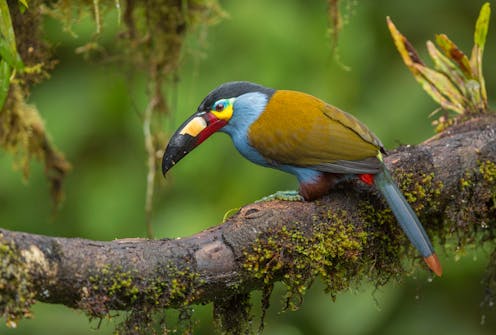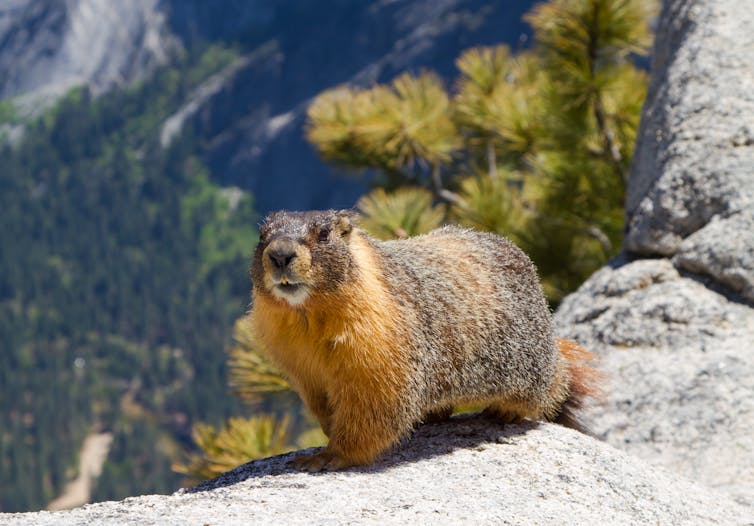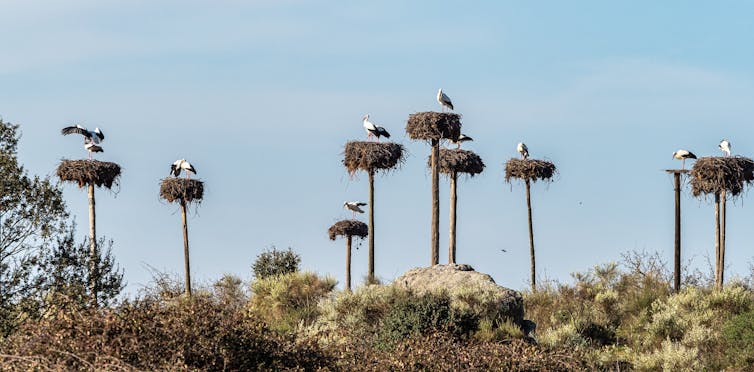
As recently as December 2022, 196 countries signed an agreement promising to “live in harmony with nature” by 2050 and to “halt and reverse biodiversity loss” by 2030.
Previous research has shown that coordinated action at the global scale is urgently needed to meet such goals. As conservationists, we’re also aware of a lag between when environmental changes like rising temperatures are observed by scientists and when organisms respond. We wanted to find out how this “ecological lag” might affect the world’s chances of stemming the loss of nature by the end of this decade.
Biodiversity – that is, the variability among living things, such as the number of species in a patch of forest – is declining globally, driven by humanity’s demand for resources. Habitat loss, harvesting, climate change, pollution and invasive species are the major driving forces behind this ecological reorganisation. For example, species found on mountains are moving upslope where it is cooler to counteract the effects of higher temperatures in their historical distribution.

These pressures may have immediate consequences, like the loss of trees and habitat during deforestation. But delayed effects, which materialise several years or even decades after the initial environmental change, are also common.
Our new research shows wildlife can take decades to fully reflect the environmental changes humans have already made. Some declines in excess of the 2030 target may already be locked in.
Investigating ecological lags
In our new study, we investigated the importance of delayed responses (lags) to climate warming and the expansion of farmland. We used data on trends in the abundance of land-based bird and mammal populations from more than 700 species across the world.
We had previously found that the speed of changes in the use of land (from forest to farmland, for instance) and climate change were useful in explaining population trends. Now we know that historical changes (those which occurred ten to 40 years previously) better explain current observable trends. For example, the population trends of small birds are best explained by how the climate was changing 13 years ago, with this delay rising to 40 years for large birds. In general, we found that larger species display longer ecological lags than smaller species. Previous research has also highlighted that longer-lived species respond more slowly to forest loss.

While the combination of past warming and land conversion is generally linked to population declines, these conditions appeared beneficial for small mammals in our study.
Our predictions of future population abundance trends suggested a mix of winners (larger birds like greylag geese could become more numerous) and losers (medium-sized birds, like little grebe, could decline).
Our research suggests that these future population trends will be a product of both concurrent and past environmental conditions. Crucially, the lags of ten years or more that we identified suggest that trends up to 2030 may already be set due to their dependence on environmental change that has already happened.
However, all is not lost.
Although the ecological lags we identified in our study increase the challenge of reversing population declines by 2030, we are increasingly aware of what works in conservation, and success stories are on the rise.
We also assessed the effects of conservation interventions like supplementing the feeding of wildlife, granting species legal protection and creating protected areas of habitat, as well as the impact of hunting. While this kind of exploitation consistently acts as a substantial drag on population trends, management efforts and protected areas had positive impacts. Other studies have identified similar patterns.

And so, preventing the overexploitation of wildlife is critical to adequately safeguarding biodiversity and the contribution of nature to human life.
The outlook for nature
The natural world is being dramatically reshaped by human activity.
Despite decades of international commitments to protect biodiversity, little progress appears to have been made.
The current targets are the most ambitious, and perhaps the most difficult to achieve, yet.
It is critical that people do not become despondent. Only with urgent action to promote the recovery of declining species can the current round of international biodiversity targets remain in our grasp.

Don’t have time to read about climate change as much as you’d like?
Get a weekly roundup in your inbox instead. Every Wednesday, The Conversation’s environment editor writes Imagine, a short email that goes a little deeper into just one climate issue. Join the 20,000 readers who’ve subscribed so far.
Richard Cornford receives funding from Horizon Europe. His work has previously been funded by NERC.
Fiona Spooner has received funding from NERC.
Robin Freeman receives funding from Research England. The Living Planet Database used in the research is partly funded by WWF-UK.
This article was originally published on The Conversation. Read the original article.







